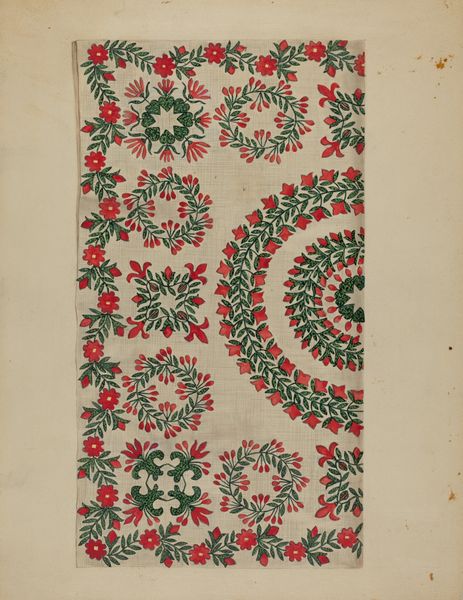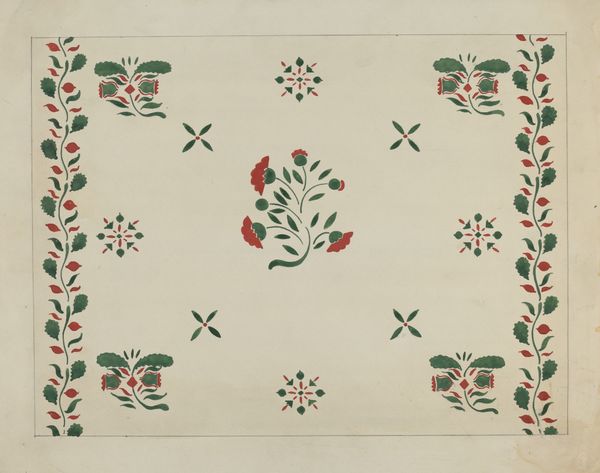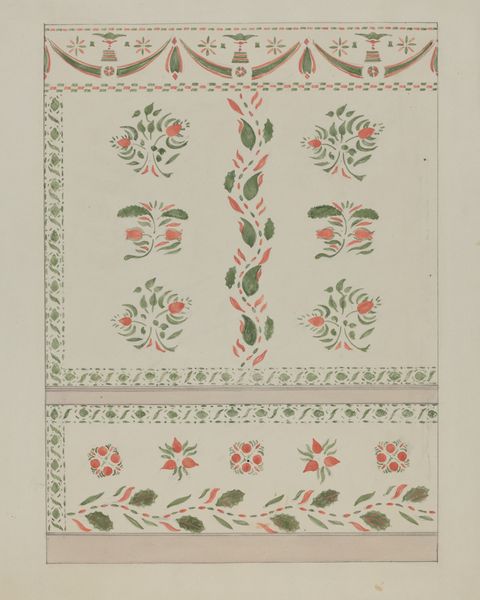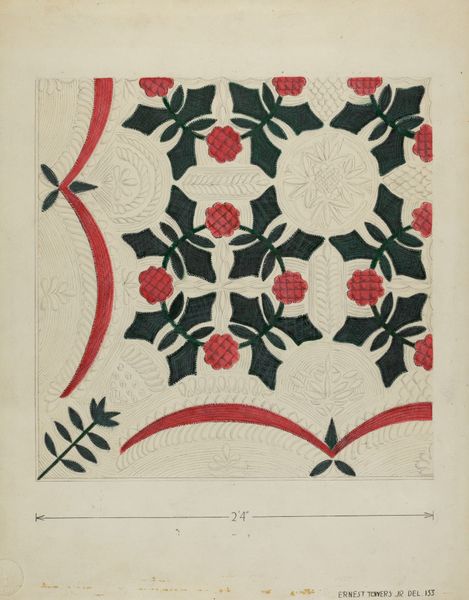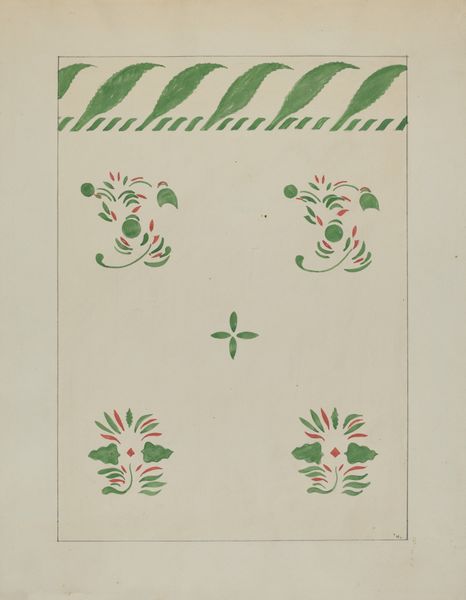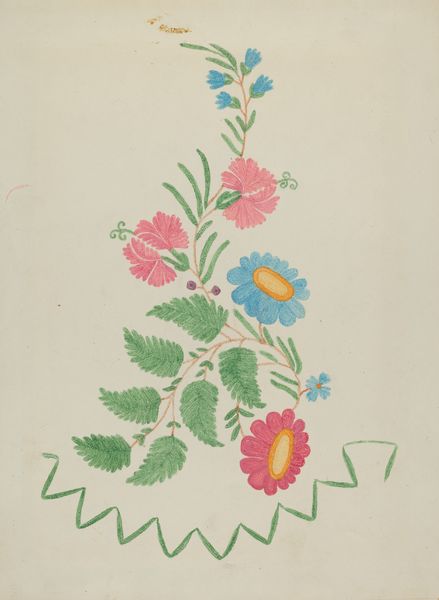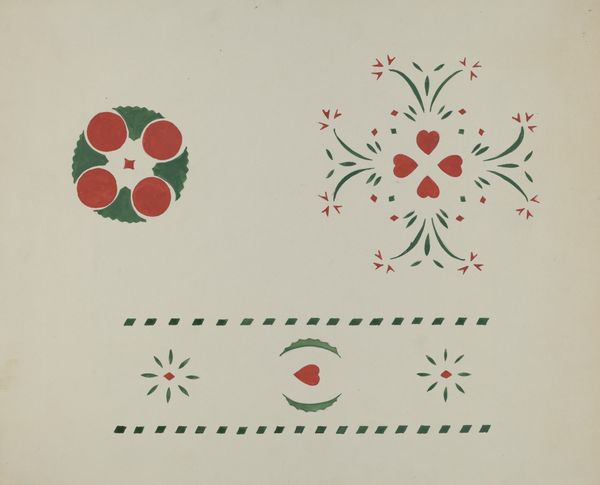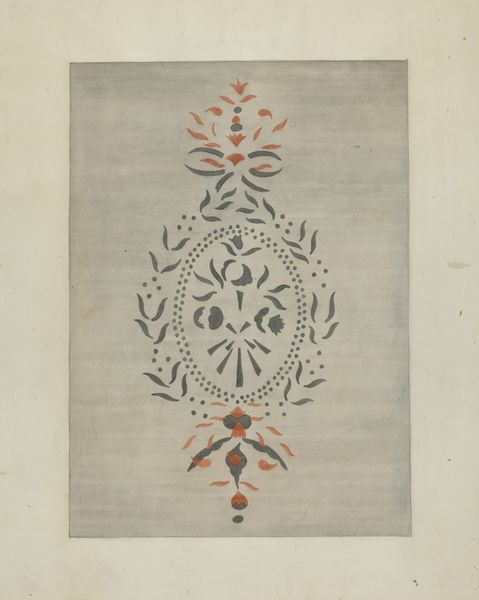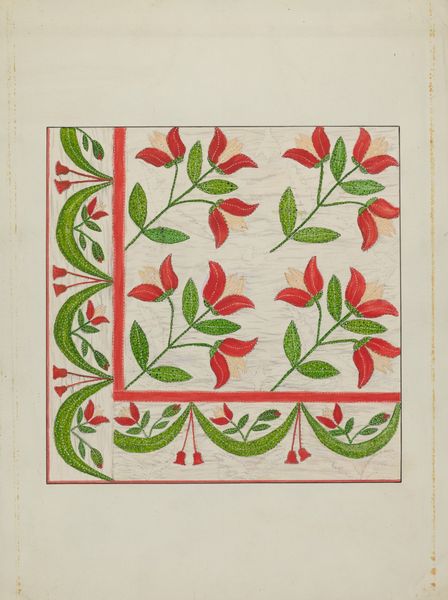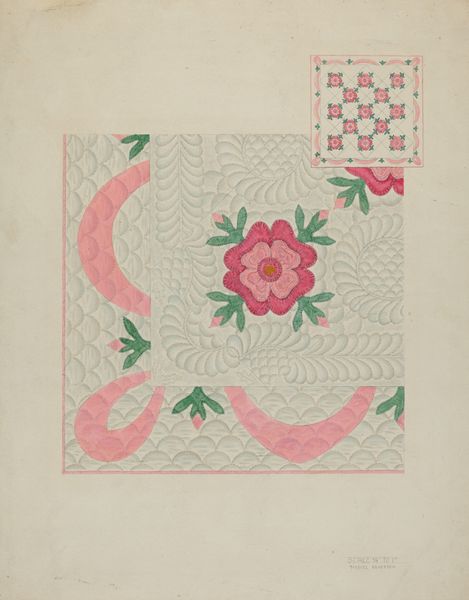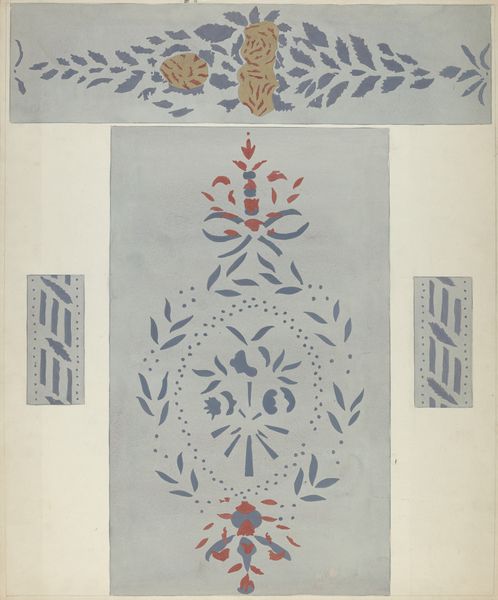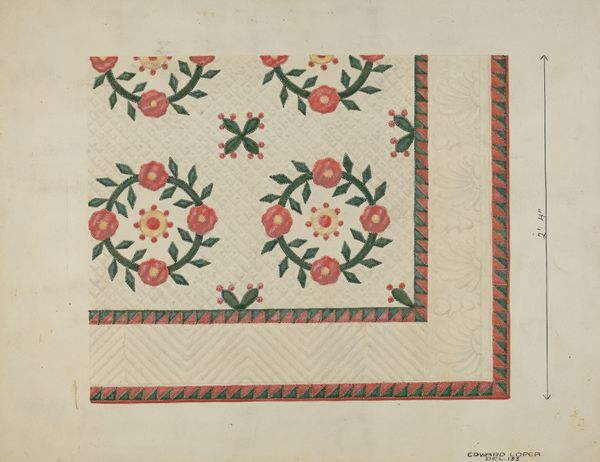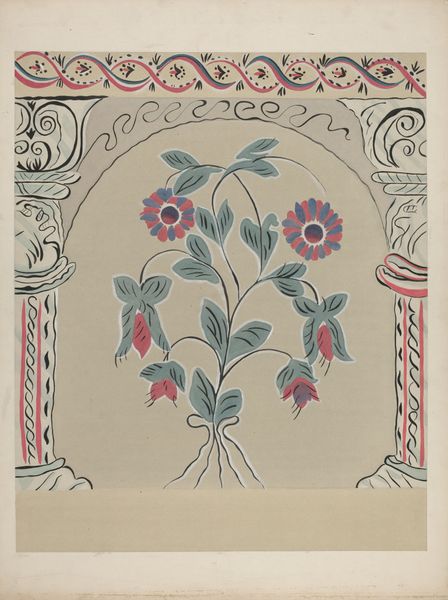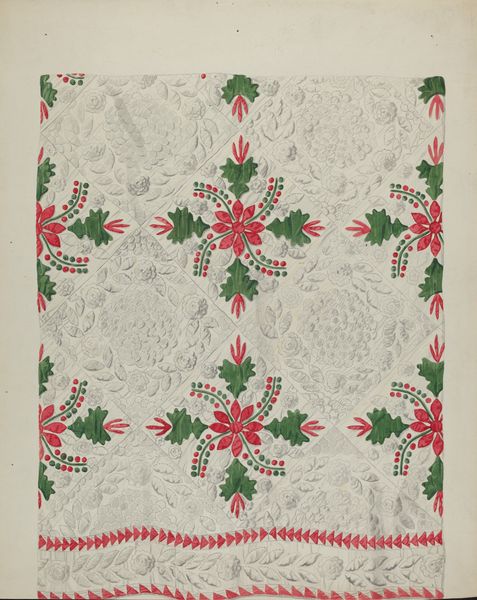
drawing, paper, watercolor
#
drawing
#
water colours
#
ink paper printed
#
paper
#
watercolor
#
folk-art
#
geometric
#
decorative-art
#
watercolor
Dimensions: overall: 35.4 x 27.7 cm (13 15/16 x 10 7/8 in.)
Copyright: National Gallery of Art: CC0 1.0
Curator: This is Ray Holden's "Stencilled Wall," likely created around 1936 using watercolor and ink on paper. The piece offers an intriguing glimpse into decorative arts. Editor: It's certainly understated. The washes are so light. A kind of ghostly feel from the delicate floral motifs against that plain ground, almost a tension between ornamentation and emptiness. Curator: Indeed. And it’s worth noting the date; 1936 places this work squarely within the Depression era in the United States. Decorative arts, often associated with folk traditions, saw a resurgence in popularity. This design might reflect a longing for simpler, perhaps more comforting aesthetics during times of economic hardship. Editor: Comforting is interesting. Looking closer, the stylized forms—those elongated leaf shapes repeated across the top border, the almost rigidly placed floral arrangements—create a sense of restrained geometry. Curator: Precisely, and the stencil technique itself speaks volumes. Stenciling made decorative design accessible, enabling wider participation in artistic creation, regardless of social status or training. It democratized the design process. Editor: Agreed, there is accessibility here. But is it folk or decorative art? Either way, that repetition is calming but borders on monotonous. Though it does have a primitive elegance to it. The pale reds and greens are interesting. Curator: The restrained palette does keep it simple. Holden’s "Stencilled Wall" becomes not just a pattern study, but a symbol of accessible artistic expression in times of hardship, one that finds beauty in simplified forms and repeated patterns. Editor: Perhaps in its subtle palette and rhythmic stenciling it represents an elegant minimalism. Thanks for sharing some context! Curator: My pleasure. Thinking about that period allows for new understandings of artwork production. Editor: Well said. Thanks for sharing.
Comments
No comments
Be the first to comment and join the conversation on the ultimate creative platform.
